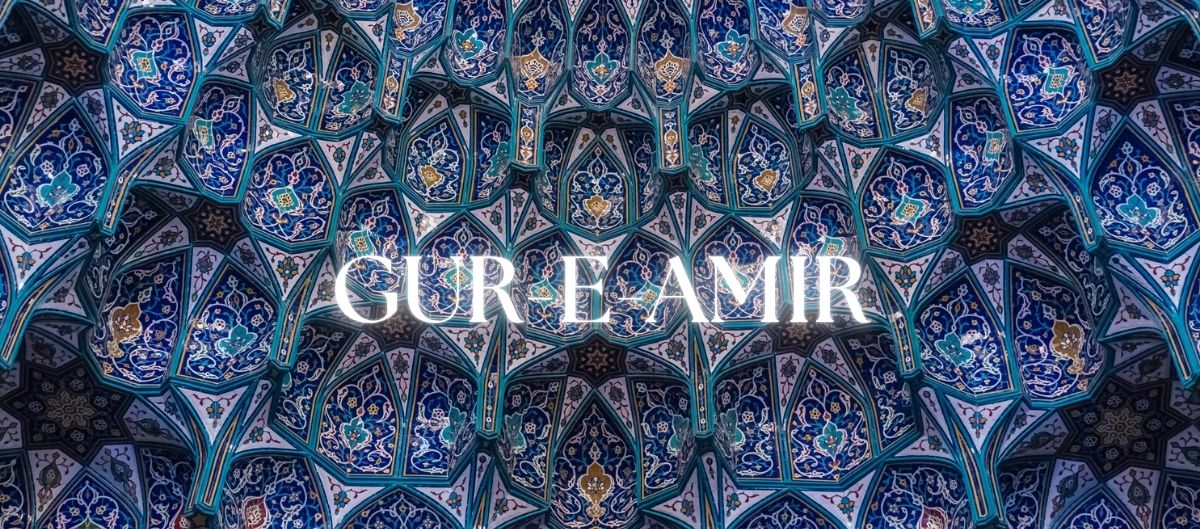My Visit to “One of the Noblest Monuments of Asia”

—solemn, symmetrical, and magnificent in its melancholy.”
Lord Curzon, British statesman 19th c.

The colors had begun to deepen in late afternoon shadows when we arrived in Samarkand, tired after a long bus ride through the desert but the mood changed instantly. We were in a sacred place, the burial monument to the legendary Tamerlane, Timur the Lame.



A hot, dry wind carried stories older than time and the sky overhead held testimonies of every empire built and conquered.
This is the city of Amir Timur—Tamerlane, the sword of the steppe, the architect of glory and ruin.
Uzbek legend
Born from the wind-blown dust of Shahrisabz in the 14th century, Timur carved a world empire with a blade in one hand and a blueprint in the other.
He was not just a conqueror—he was a dreamer, a builder, a lover of symmetry and stars.
His conquests followed the Silk Road across Persia, India, Syria and Anatolia, empire building with unrestrained brutality and incomparable brilliance. And Samarkand was the last glittering treasure, the heart of it all.
He brought the greatest artisans, astronomers, and architects from the corners of his conquests and made them create beauty that would outlive his brutality. And he asked them to design a tomb—not for now, but for eternity.

His tomb is the stuff of legend and astonishes in scale. That tomb is the Gur-e-Amir, the Tomb of the King. Tucked in a quiet part of Samarkand, it glows like a forgotten gemstone.
Inside, there is no pomp—only a sacred silence. The chamber is dim, cold, reverent. A single slab of dark jade, heavy and veined like ancient earth, marks Timur’s grave.



Local Uzbek oral tradition holds a beautiful couplet still whispered by guides and elders:
“Where Timur sleeps, the moon does not rise in haste—It waits until the dome dreams of stars.”

His body lies below, in a crypt meant to be untouched. A Persian inscription warns:
“When I rise from the dead, the world shall tremble.”

Legend says the tomb was opened by Soviet archaeologists in 1941—and that very day, Hitler invaded the Soviet Union. Three years later, Timur’s remains were reburied with Islamic rites, and the tide of the war began to turn.
Legend points to prophecy.
Tamerlane is an outsized myth, a conquerer whose name was once feared and revered from Delhi to Damascus. But here, there is triumph only in the silence.

And Samarkand has outlived Timur. Its majesty, with looming madrasas, tiled dreams and starlit spaces speak of his storied ambition and accomplishments.
I
Related Posts
Fairy Tales, Poets and Silks: My Love Affair with Bukhara
Bukhara, one of the country’s oldest and continuously inhabited cities, a major center of trade, …
June 10, 2025Captivating Khiva: An Astonishing Life Inside the City Walls
Khiva’s roots stretch back over 2,500 years, but its golden age began in the 16th …
June 7, 2025

Leave A Comment